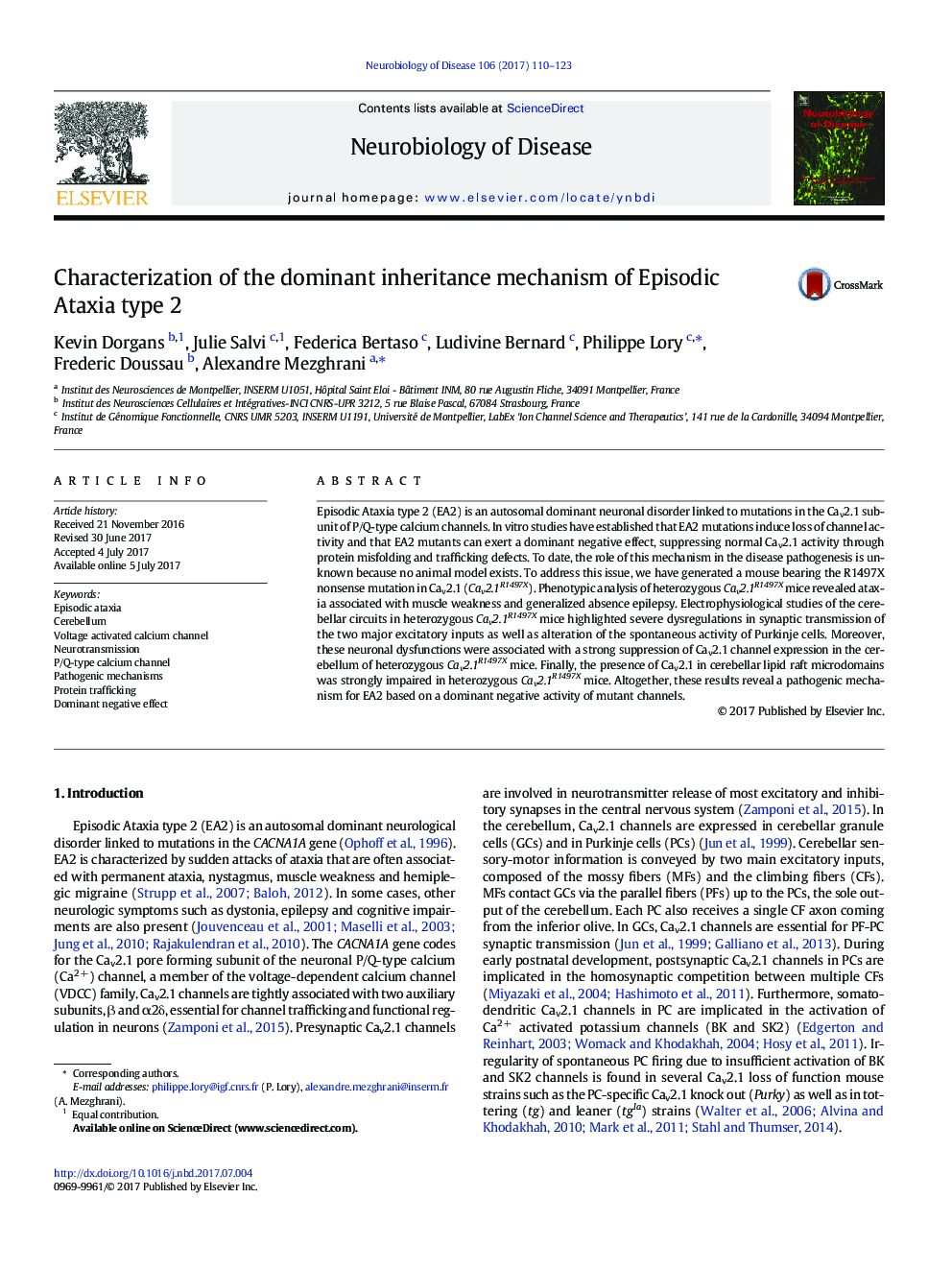| Article ID | Journal | Published Year | Pages | File Type |
|---|---|---|---|---|
| 5630589 | Neurobiology of Disease | 2017 | 14 Pages |
â¢A new Cav2.1R1497X mouse strain phenotypically reproduces Episodic Ataxia type 2.â¢Synaptic dysfunctions are found in the cerebellum of heterozygous Cav2.1R1497X mice.â¢Neuronal defects are induced by altered Cav2.1 channel expression and trafficking.
Episodic Ataxia type 2 (EA2) is an autosomal dominant neuronal disorder linked to mutations in the Cav2.1 subunit of P/Q-type calcium channels. In vitro studies have established that EA2 mutations induce loss of channel activity and that EA2 mutants can exert a dominant negative effect, suppressing normal Cav2.1 activity through protein misfolding and trafficking defects. To date, the role of this mechanism in the disease pathogenesis is unknown because no animal model exists. To address this issue, we have generated a mouse bearing the R1497X nonsense mutation in Cav2.1 (Cav2.1R1497X). Phenotypic analysis of heterozygous Cav2.1R1497X mice revealed ataxia associated with muscle weakness and generalized absence epilepsy. Electrophysiological studies of the cerebellar circuits in heterozygous Cav2.1R1497X mice highlighted severe dysregulations in synaptic transmission of the two major excitatory inputs as well as alteration of the spontaneous activity of Purkinje cells. Moreover, these neuronal dysfunctions were associated with a strong suppression of Cav2.1 channel expression in the cerebellum of heterozygous Cav2.1R1497X mice. Finally, the presence of Cav2.1 in cerebellar lipid raft microdomains was strongly impaired in heterozygous Cav2.1R1497X mice. Altogether, these results reveal a pathogenic mechanism for EA2 based on a dominant negative activity of mutant channels.
